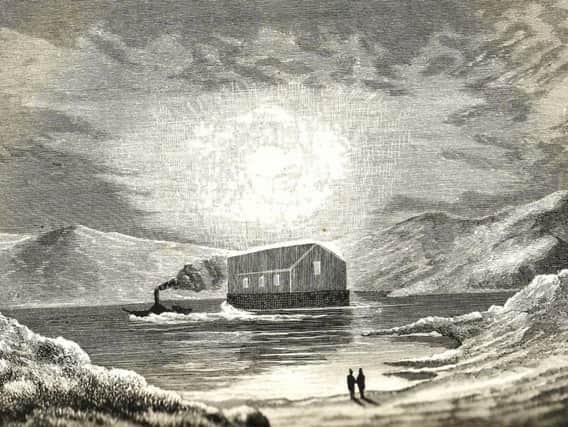The 'floating church' moored in a loch by defiant Highlanders


During this month in 1846, a floating church - known as the Iron Church - was moored in Loch Sunart at Strontian in a bold move by the Free Church after it was forced to find new places to worship following the split in the Church of Scotland in 1843.With a number of landowners, who had powers to select the ministers that served on their lands, refusing to support the break from the establishment, inventive alternatives were required.Some services were held by the new church on the public road, given there was no other public property in some parishes. Worshippers also gathered on the shore between the high and low tides, with these patches of ground lawfully considered as the sea.In Campbeltown, a makeshift church was made in the distillery owned by J Grant and son with locals creating the construction in half a day. At Plockton, an open air church was built, with members of the new Free Church pulling rocks from the hillside to create rows of seat in a natural amphitheatre close to the village.The need for radical new places of worship was discussed at the General Assembly of the Free Church, held in Inverness, in August 1845.“It happens that in almost all place where sites are urgently required, churches may be built in a fashion differently from that we have been accustomed to,” a Dr Candlish told the assembly.Lochcarron was one of a number of sites proposed for floating churches, as was Applecross.Dr Candlish told the assembly that a floating church could be tethered “right under the very windows of Lord Macdonald”, one of the landowners who refused to support the creation of new churches.“If we cannot get them on land...we will take up position in the sea,” Dr Candlish said.“If this were done, even in one or two instances - if you brought the place of worship under the windows of Lord Macdonald and Macleod and under the very nose of Applecorss, they would be glad to say to you ‘I will give you a site on dry land’. What a thing it would be for those gentlemen and their friends to come to their window and see a vast floating hulk floating in the bay, with a nice new flag, which was unknown, but which they were told, on their asking, was that of the Free Church.”The floating church arrived at Loch Sunart at Strontian on June 12, 1846, according to some accounts. It was built on The Clyde at a contract price of £1,400. Holding 400 people, it was towed from Greenock through the Mull of Kintyre.One account said: “As she came up along Loch Sunart, people were pouring out of the houses some of them ran up to the tops of eminences and commenced waving their handkerchiefs. As she arrived here, the people crowded down to tho shore to get a near view of her. They were quite overjoyed. It has sent a thrill already many miles all directions.”Worshippers were taken to the floating church by rowing boat, with a man sailing up and down the shore, shouting out in Gaelic about the service at 6 o’clock.The Iron Church almost broke free from its tethers on several occasions, with extra anchors brought from Glasgow to secure the vessel. It finally crashed ashore in a heavy gale in September 1847 with landowner Sir James Riddell, who initially refused the Free Church to build on his land, agree to supply the materials for its repair, according to accounts,Eventually a Parliamentary enquiry was held, and most landlords relented under the public pressure and gave sites for the Free Church to meet on dry land. In recent years, part of an anchor from the Iron Church was found in the loch.